-
 Bitcoin
Bitcoin $107,100.2009
-0.67% -
 Ethereum
Ethereum $2,438.7946
0.00% -
 Tether USDt
Tether USDt $1.0000
-0.04% -
 XRP
XRP $2.1506
-2.64% -
 BNB
BNB $643.4261
-0.64% -
 Solana
Solana $142.8432
-3.12% -
 USDC
USDC $0.9996
-0.02% -
 TRON
TRON $0.2713
-0.28% -
 Dogecoin
Dogecoin $0.1598
-4.15% -
 Cardano
Cardano $0.5553
-4.61% -
 Hyperliquid
Hyperliquid $37.4949
-3.45% -
 Bitcoin Cash
Bitcoin Cash $494.8287
2.75% -
 Sui
Sui $2.6305
-7.06% -
 Chainlink
Chainlink $13.0534
-1.94% -
 UNUS SED LEO
UNUS SED LEO $8.9960
0.02% -
 Stellar
Stellar $0.2361
-3.87% -
 Avalanche
Avalanche $17.2273
-4.80% -
 Toncoin
Toncoin $2.8106
-3.27% -
 Shiba Inu
Shiba Inu $0.0...01130
-3.71% -
 Litecoin
Litecoin $84.4367
-0.99% -
 Hedera
Hedera $0.1442
-6.40% -
 Monero
Monero $314.6218
-1.70% -
 Dai
Dai $0.9998
-0.01% -
 Ethena USDe
Ethena USDe $1.0000
-0.02% -
 Polkadot
Polkadot $3.2923
-4.40% -
 Bitget Token
Bitget Token $4.4284
0.60% -
 Uniswap
Uniswap $6.8367
-4.04% -
 Pi
Pi $0.5559
-13.86% -
 Pepe
Pepe $0.0...09257
-8.51% -
 Aave
Aave $254.2527
-3.41%
Will the time-sharing chart open higher the next day after the end of the trading?
Time-sharing charts show short-term crypto price movements but can't guarantee the next day's open will be higher, as it depends on news, sentiment, and overnight trading activity.
Jun 26, 2025 at 04:35 pm
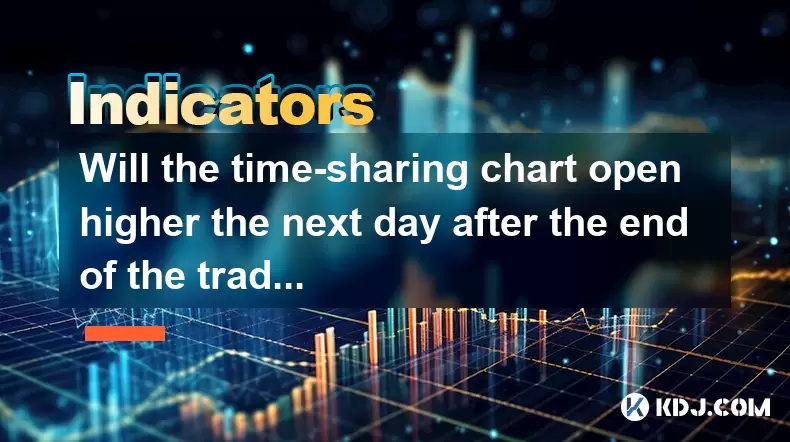
Understanding Time-Sharing Charts in Cryptocurrency Trading
In the realm of cryptocurrency trading, time-sharing charts, often referred to as tick or intraday charts, play a crucial role in analyzing short-term price movements. These charts display price fluctuations over very small time intervals, such as 1 minute, 5 minutes, or 15 minutes. Traders rely on them to make real-time decisions based on micro-trends and volatility patterns.
The question arises: will the time-sharing chart open higher the next day after the end of the trading? To understand this, it’s essential to delve into how market sentiment, overnight news, and global events influence opening prices in crypto markets.
Time-sharing charts do not guarantee that the next day's opening price will be higher than the previous session's closing price. They only reflect historical data within a specific timeframe and cannot predict future behavior with certainty.
How Opening Prices Are Determined in Cryptocurrency Markets
Unlike traditional stock exchanges, cryptocurrency markets operate 24/7, without fixed opening and closing hours. However, traders often refer to daily candles or sessions that reset at midnight UTC. The opening price for a new session is determined by the first trade executed after the previous session ends.
This means if the last trade of the day occurs at $30,000 and the first trade the following day happens at $30,100 due to positive news or increased demand during the night, then yes, the next day opens higher. Conversely, if panic selling occurs overnight, the opening price may be lower.
- Market orders placed outside active trading hours can affect the next session’s opening price.
- News releases or regulatory updates overnight can cause significant gaps up or down.
- Liquidity levels also influence how large a gap appears between sessions.
The Role of Gaps in Cryptocurrency Price Charts
Gaps occur when the price of an asset jumps from one level to another without any trading happening in between. In crypto, where the market never sleeps, true gaps are rare but still possible under certain conditions — especially when there is a sudden surge or drop in volume during off-peak hours.
For instance, if a major exchange halts trading due to maintenance or a flash crash happens while most traders are offline, a visible gap can appear on the chart when trading resumes. This could mean the next session opens significantly higher or lower than the previous close.
Gaps in time-sharing charts can indicate strong momentum shifts even though they don't always result in a higher open.
Factors Influencing the Next Day’s Open
Several elements can impact whether the next day opens higher:
- Overnight macroeconomic developments (e.g., inflation reports, Fed statements).
- Major announcements related to blockchain technology or regulation.
- Large whale transactions moving the market.
- Global geopolitical tensions affecting investor sentiment.
These factors can create buying pressure that pushes the price up immediately once the new session begins. Alternatively, negative news might trigger sell-offs before most retail traders are even awake.
Analyzing Historical Data for Patterns
Traders often look back at historical time-sharing charts to spot recurring patterns or tendencies. While no pattern guarantees future performance, some observations can be made:
- After bullish candlestick formations, the next session sometimes opens higher.
- Strong volume surges toward the end of a session may carry over into the next day.
- Bearish closes often precede lower openings unless external catalysts intervene.
It's important to combine these insights with broader market analysis rather than relying solely on past chart behavior.
Frequently Asked Questions
Q: Can I use time-sharing charts to predict exact opening prices?
No, time-sharing charts show historical trades within a session but cannot precisely forecast the next session’s opening price. Market dynamics change rapidly due to external influences.
Q: What causes a gap up in crypto charts?
A gap up typically results from sudden demand spikes or positive news occurring during low-liquidity periods. It reflects a jump in price where no trades occurred previously.
Q: Is it reliable to base trading decisions on the previous session’s close?
Relying solely on the previous session’s close is risky. Combine it with other indicators like volume, order book depth, and real-time news for better decision-making.
Q: Do all cryptocurrencies experience similar gap behaviors?
No, larger-cap coins like Bitcoin and Ethereum tend to have smoother transitions, while smaller altcoins may see more erratic gaps due to lower liquidity and higher volatility.
Disclaimer:info@kdj.com
The information provided is not trading advice. kdj.com does not assume any responsibility for any investments made based on the information provided in this article. Cryptocurrencies are highly volatile and it is highly recommended that you invest with caution after thorough research!
If you believe that the content used on this website infringes your copyright, please contact us immediately (info@kdj.com) and we will delete it promptly.
- Coinbase, Wrapped Tokens, and Base Network: A New Era for Cross-Chain DeFi?
- 2025-06-26 21:10:14
- BNB Price Check: Can Binance Coin Reserves Fuel a Rally to $800?
- 2025-06-26 20:25:12
- PEPD, Memes, and Ethereum: A New Era of Meme Utility?
- 2025-06-26 20:25:12
- Pepe Dollar vs. Pepecoin: The Meme Coin Evolution
- 2025-06-26 20:50:12
- Fartcoin, Coinbase, and Crypto Mortgages: What in the World?
- 2025-06-26 20:50:12
- Pi Coin, AI Speculation, and Pi2Day 2025: What's the Buzz?
- 2025-06-26 21:30:12
Related knowledge
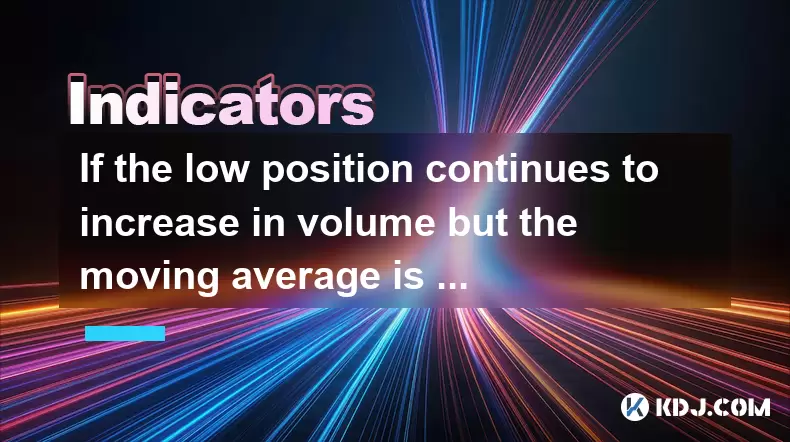
If the low position continues to increase in volume but the moving average is still short, should we wait and see?
Jun 26,2025 at 08:07pm
Understanding the Scenario: Low Position with Increasing VolumeIn the cryptocurrency market, traders often encounter situations where a particular asset is trading at a relatively low price level (referred to as a 'low position'), yet there is a noticeable increase in trading volume. This phenomenon can be confusing because it suggests that more market ...
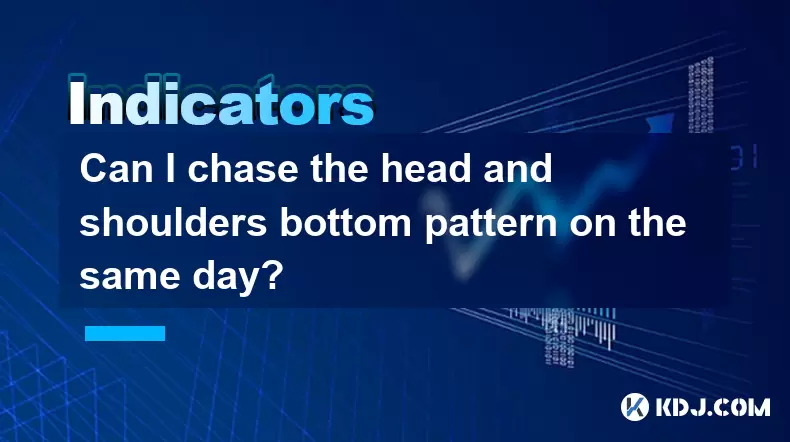
Can I chase the head and shoulders bottom pattern on the same day?
Jun 26,2025 at 06:14pm
Understanding the Head and Shoulders Bottom Pattern in Cryptocurrency TradingThe head and shoulders bottom pattern, also known as the inverse head and shoulders, is a reversal chart pattern commonly observed in cryptocurrency price charts. It signals a potential shift from a downtrend to an uptrend. The structure consists of three distinct lows: the lef...

What should I do if the 10-day line turns downward but the monthly line is still upward?
Jun 26,2025 at 08:56pm
Understanding the 10-Day and Monthly Moving AveragesIn cryptocurrency trading, moving averages are among the most widely used technical indicators. The 10-day moving average (MA) reflects short-term price trends, while the monthly moving average, often calculated over 30 days, represents long-term market sentiment. When the 10-day line turns downward, i...
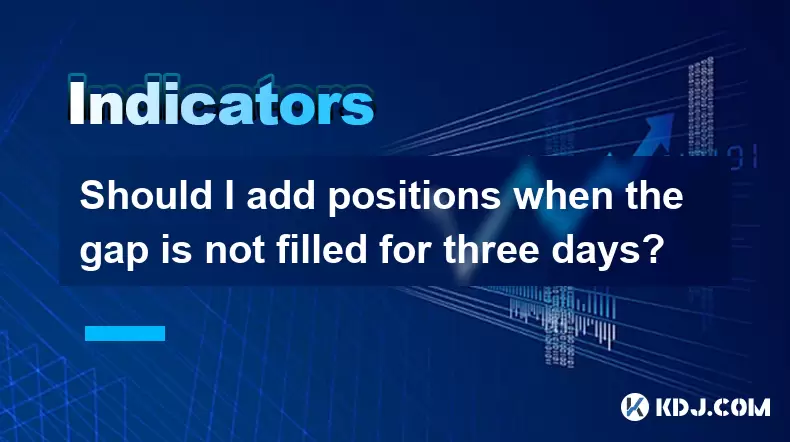
Should I add positions when the gap is not filled for three days?
Jun 26,2025 at 07:49pm
Understanding the Concept of Gaps in Cryptocurrency TradingIn cryptocurrency trading, a gap occurs when the price of an asset opens significantly higher or lower than its previous closing price, with no trading activity taking place in between. This phenomenon is common due to the 24/7 nature of crypto markets and external events such as news releases, ...
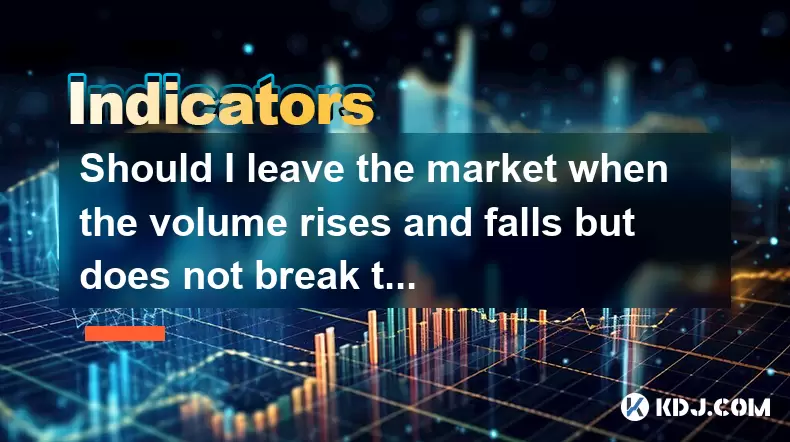
Should I leave the market when the volume rises and falls but does not break the 5-day line?
Jun 26,2025 at 06:08pm
Understanding Market Volume and the 5-Day Moving AverageWhen traders talk about market volume, they're referring to the total number of shares or contracts traded during a specific period. In cryptocurrency trading, volume plays a crucial role in confirming trends and predicting potential reversals. The 5-day moving average (5DMA) is a short-term indica...
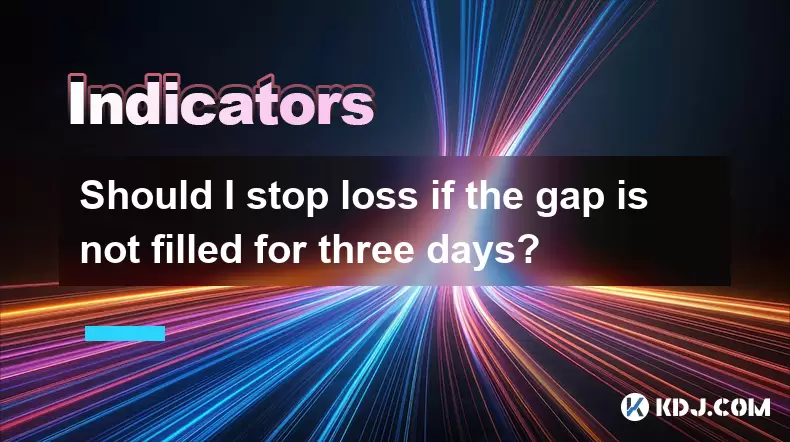
Should I stop loss if the gap is not filled for three days?
Jun 26,2025 at 06:35pm
Understanding Gaps in Cryptocurrency TradingIn cryptocurrency trading, gaps refer to areas on a price chart where the asset's price jumps from one level to another without any trading occurring at the intermediate levels. These gaps can appear due to sudden market movements, often influenced by news events, macroeconomic data releases, or shifts in inve...

If the low position continues to increase in volume but the moving average is still short, should we wait and see?
Jun 26,2025 at 08:07pm
Understanding the Scenario: Low Position with Increasing VolumeIn the cryptocurrency market, traders often encounter situations where a particular asset is trading at a relatively low price level (referred to as a 'low position'), yet there is a noticeable increase in trading volume. This phenomenon can be confusing because it suggests that more market ...

Can I chase the head and shoulders bottom pattern on the same day?
Jun 26,2025 at 06:14pm
Understanding the Head and Shoulders Bottom Pattern in Cryptocurrency TradingThe head and shoulders bottom pattern, also known as the inverse head and shoulders, is a reversal chart pattern commonly observed in cryptocurrency price charts. It signals a potential shift from a downtrend to an uptrend. The structure consists of three distinct lows: the lef...

What should I do if the 10-day line turns downward but the monthly line is still upward?
Jun 26,2025 at 08:56pm
Understanding the 10-Day and Monthly Moving AveragesIn cryptocurrency trading, moving averages are among the most widely used technical indicators. The 10-day moving average (MA) reflects short-term price trends, while the monthly moving average, often calculated over 30 days, represents long-term market sentiment. When the 10-day line turns downward, i...

Should I add positions when the gap is not filled for three days?
Jun 26,2025 at 07:49pm
Understanding the Concept of Gaps in Cryptocurrency TradingIn cryptocurrency trading, a gap occurs when the price of an asset opens significantly higher or lower than its previous closing price, with no trading activity taking place in between. This phenomenon is common due to the 24/7 nature of crypto markets and external events such as news releases, ...

Should I leave the market when the volume rises and falls but does not break the 5-day line?
Jun 26,2025 at 06:08pm
Understanding Market Volume and the 5-Day Moving AverageWhen traders talk about market volume, they're referring to the total number of shares or contracts traded during a specific period. In cryptocurrency trading, volume plays a crucial role in confirming trends and predicting potential reversals. The 5-day moving average (5DMA) is a short-term indica...

Should I stop loss if the gap is not filled for three days?
Jun 26,2025 at 06:35pm
Understanding Gaps in Cryptocurrency TradingIn cryptocurrency trading, gaps refer to areas on a price chart where the asset's price jumps from one level to another without any trading occurring at the intermediate levels. These gaps can appear due to sudden market movements, often influenced by news events, macroeconomic data releases, or shifts in inve...
See all articles
























































































